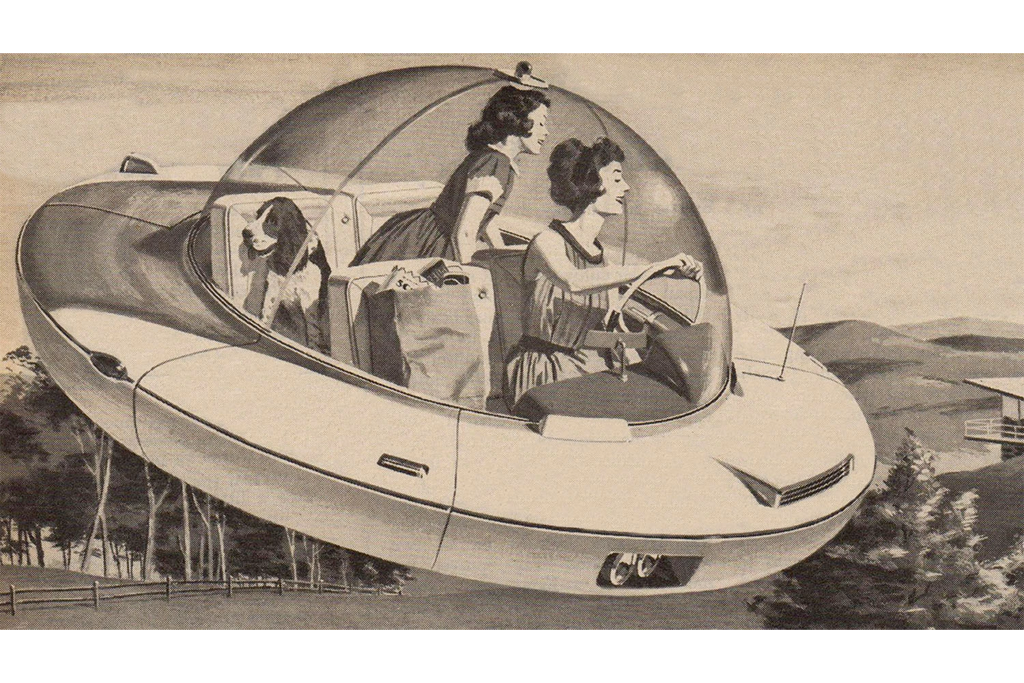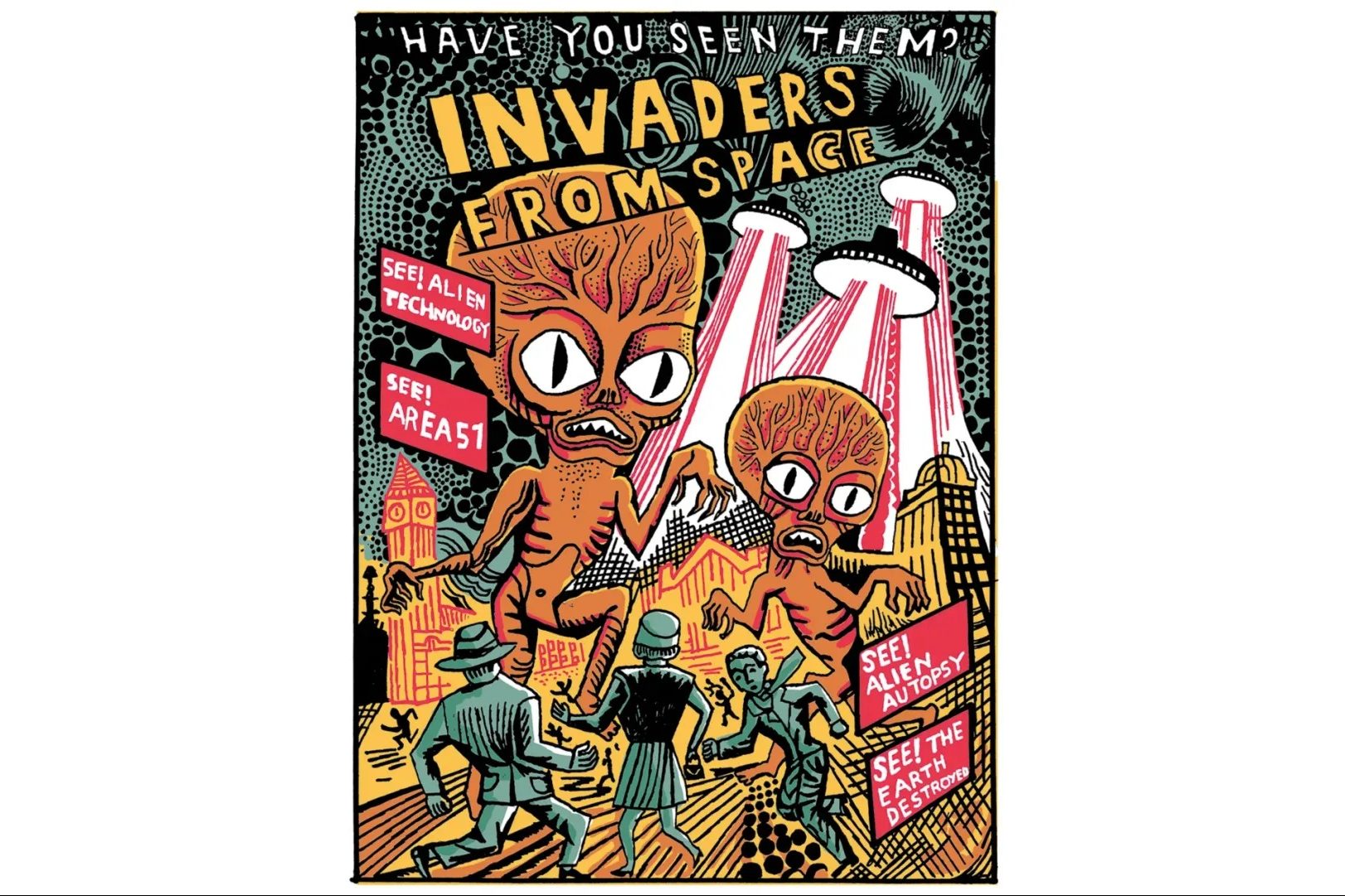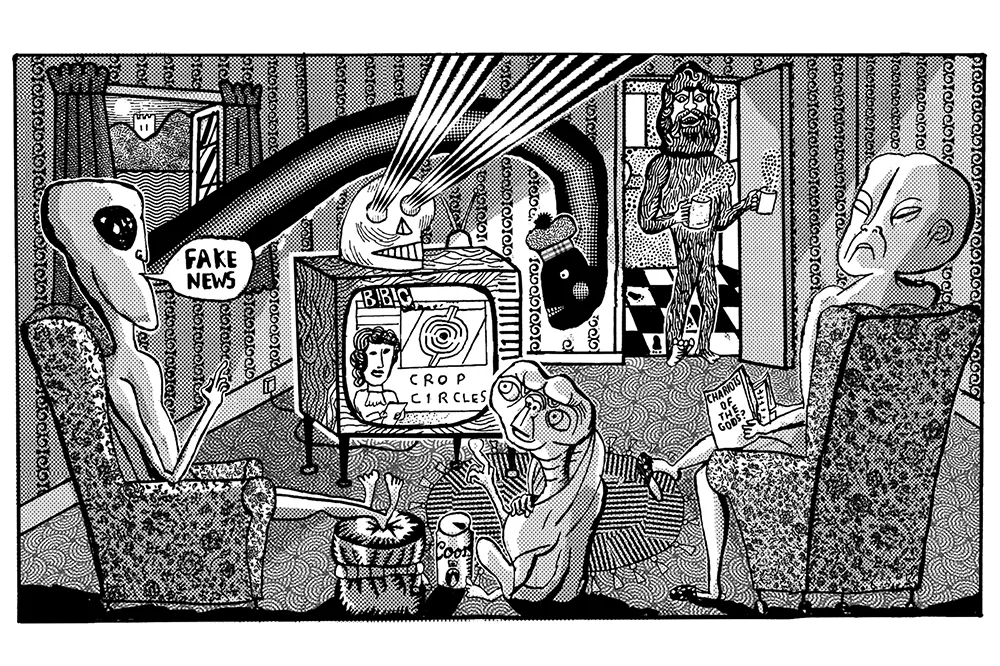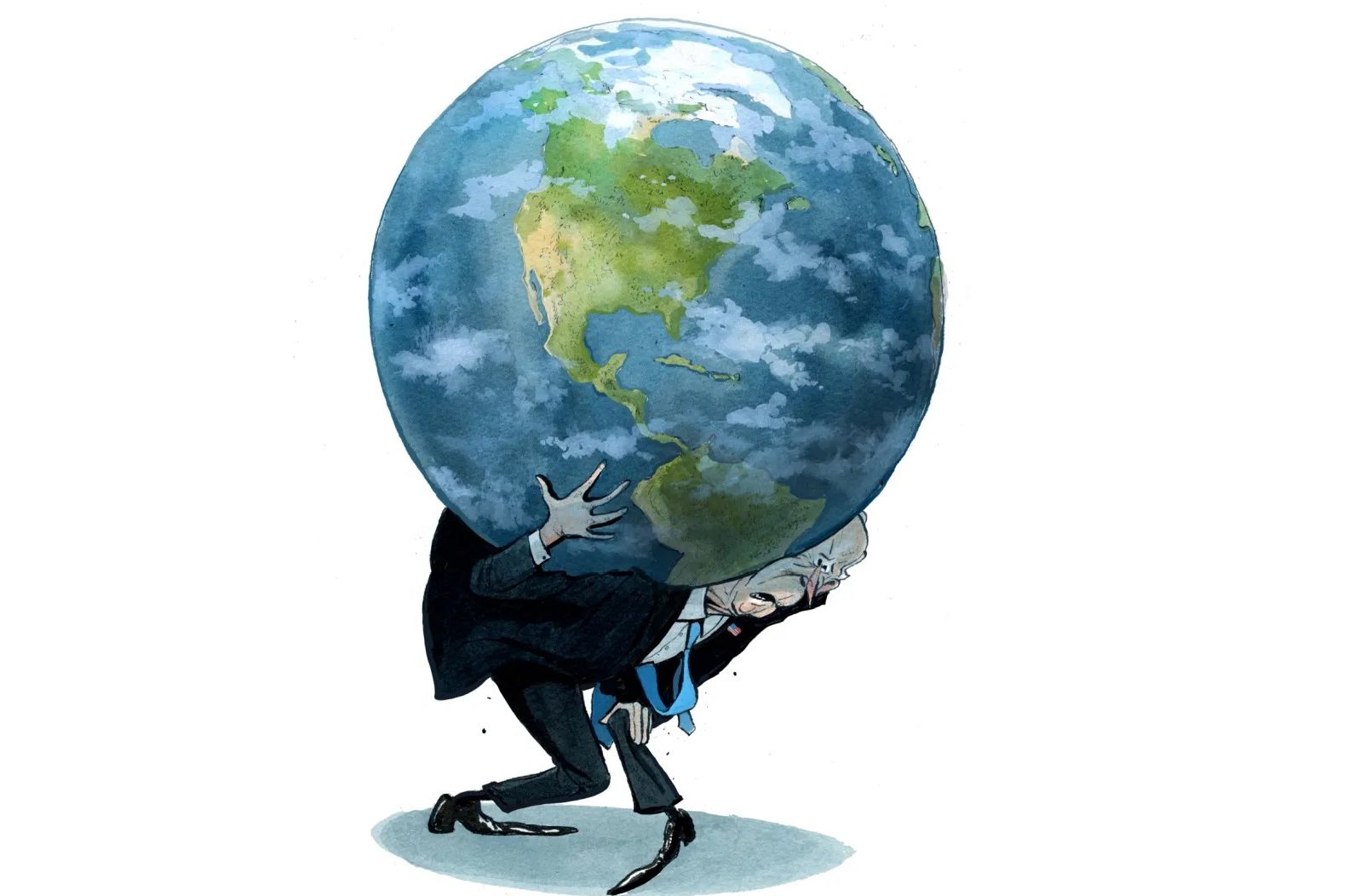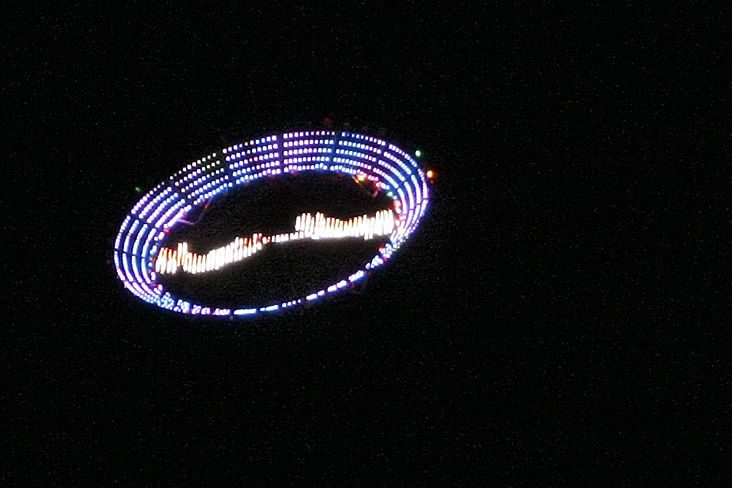Even if Chinese spy balloons — or alien spacecraft scouting the planet ahead of their coming invasion — start being deployed more discreetly than they have been of late, there will still be more sightings than usual of unidentified aerial phenomena (UAPs: a new set of initials designed to help UFOs shed their dodgy past). The word has gone out that the stigma attached to military personnel who report UAPs has gone, and they appear to have responded: there were more reported UAP sightings between March 2021 and August 2022 than in the previous seventeen years, including nearly 200 that remain unexplained. What’s more, the sensors that scan American skies have been recalibrated to catch slower-moving items, such as suspicious Chinese balloons — something that is bound to give rise to more false alarms.
The speculation that three out of the four floating interlopers recently downed by the US — the “cylindrical object,” the octagonal object and the object the size of a small car — were of alien origin owed a lot to the fact that the US is in the middle of one of its periodic waves of UFO sightings, known as “flaps.” Such flaps have a way of spreading, even if this one was triggered by sightings and video imagery which may owe more to Beijing’s balloons and drones than anything that has made its way to us from beyond the stars. People see what they want or expect to see.
There have been tales of UFOs for millennia, but it took mass communication to turn accounts of vast, sometimes winged airships over California in 1896-97 into a steampunk flap, a prototype of sorts for what was to come half a century later, complete with a supposed crash. The alien dirigibles, if that’s what they were, largely disappeared from public memory. But the psychological ground for their return in more modern form was being prepared by the interplay between popular culture and science. In 1898, H.G. Wells conjured up visions of Martian aggression. A little over twenty-five years later, Robert Goddard launched his first liquid-fueled rocket from a farm in Massachusetts. Space travel was beginning to enter the realm of plausibility, and if we could go out there, why couldn’t they (a belief in them has existed for a long, long time) come here?
It’s unlikely to be a coincidence that pulp magazines — Amazing Stories and all the others — dedicated to science fiction, and filled with alien fare, began finding an audience in the 1920s. And as the quality of the writing improved, so did rocketry. Old distinctions between the possible and the impossible were blurring.
And then, in June 1947, businessman Kenneth Arnold was piloting a plane near Mount Rainier in Washington State when he spotted nine “very bright objects” moving at very high speed. Keeping formation, they darted hither and thither, flying, he fatefully explained, “like a saucer would if you skipped it across the water.” Whether Arnold described the objects themselves as saucer-shaped remains disputed, but it was as saucers, or discs, that they skipped into the American — and then global — imagination.
Within weeks some wreckage found on a remote ranch in New Mexico was referred to by the public information officer at the (relatively) nearby Roswell army airfield as a “flying disc.” That explanation was rapidly retracted: the wreckage was, Americans were told, of a weather balloon. No matter, despite that disappointment, hundreds of saucers — any doubts about the shape of the craft had gone — were “seen” throughout the rest of 1947. People tend to interpret what they see in line with their expectations. Stories of UFOs spread, given credibility by repetition and the media, their appeal boosted still further by the enchantment that a belief in aliens can bring into everyday life.
Unlike the airships of the 1890s, the flying saucers did not fade away. The supposed sightings kept coming, encouraged by the media, which had been quick to learn that saucers sold well. And a side-effect of those sales was the commencement of a continuous to-and-fro that is still under way. Reports of sightings provide the media with content; the way that content is processed by the media, whether in a newspaper, say, or a movie script, may well influence sightings to come. For example, consider how we “know” what aliens look like. Prior to Close Encounters of the Third Kind (1977), they were typically described in one of three ways. They were either “Nordics,” tall and blond, “Reptilians,” scaly but bipedal, or the big-headed, big-eyed “Grays.” The Grays were already leading the pack by the 1960s, but after their role in Close Encounters, they became the definitive aliens, whether on screen or, allegedly, in person.
Close Encounters was released almost exactly thirty years after Kenneth Arnold’s flight, testimony in itself to the durability of the American obsession with UFOs, as is the fact that, even before the Tic Tacs flitted across our screens, we were still talking about aliens. In part that’s because the story of these visitors from afar is, like all the best myths, not only a great story, but one continually refreshed by new witnesses telling what they thought they had seen, or, often more entertainingly, simply making things up. By the end of the 1970s, the events at Roswell had long been forgotten, only to be revived by an interview with one of the protagonists, by then an old man, asserting that the wreckage he had seen was extraterrestrial. A far from reliable book, The Roswell Incident, was published a year or so later, and became a bestseller. Its tale of a crash and a cover-up — “a cosmic Watergate,” in the words of one ufologist — fitted in nicely with the traditional American distrust of government and paved the way for countless questionable claims and a series of staggeringly unconvincing first-hand, second-hand and, inevitably, third-rate witnesses. It also led to The X-Files.
For years, the media had not only shaped the alien narrative, but by its constant use of extraterrestrials on the screen and on the page, had also softened us up for the idea that they must exist, an idea only reinforced by the glimpses that space telescopes give us of the immensity of the universe. According to a 2021 Pew Survey around two-thirds of Americans believe that there is alien life somewhere. But The X-Files, a TV show that reinvigorated America’s interest in aliens with a healthy dose of paranoia and conspiracism, not only brought extraterrestrials down to earth, but focused attention on what the government had really known about UFOs, albeit in a highly fictionalized manner.
Fair enough. The US Air Force was concerned enough about the flap that followed Arnold’s flight to look into what was going on (not so much, its investigators concluded, but some cases were left unresolved). It then launched the marvelously named Project Grudge to soothe the public’s fears, essentially by debunking talk of UFOs. A third, longer-lasting project, Project Blue Book (1952-69), led to the examination of 12,618 sightings, of which 701 were unresolved, although there was “no evidence” that there was anything extraterrestrial about them. Blue Book was closed after a committee at the University of Colorado funded by the Air Force argued that there was no point in carrying on.
That, more or less (in the 1990s the Air Force finally disclosed that the broken bits and pieces taken to Roswell were not the remnants of a weather balloon, but — appropriately enough under current circumstances — part of a top-secret balloon project), was meant to be the end of official investigations. But various government agencies continued poking around, beginning (so far as we know) in 2007 with the Advanced Aerospace Threat Identification Program. This was followed by the Unidentified Aerial Phenomena Task Force, which was in turn succeeded last year by the All-Domain Anomaly Resolution Office. Possibly this was connected with the objects hovering and flying (and in one case rotating while flying) that could be seen on three cockpit videos taken in 2004 and 2015 and leaked in 2007 and 2017, videos that featured comments from naval fighter pilots that left no doubt that they thought they were looking at something very strange, flap fodder of the highest quality. And these occurrences were by no means unique. A preliminary report issued by the Office of the Director of National Intelligence (ODNI) in 2021 was inconclusive, but contained enough to fuel ufologists’ dreams: 143 events still a mystery, talk of “unusual flight characteristics” and more.
Then came the crushing follow-up: an ODNI report released in January. The number of unexplained sightings was up, no surprise, given the overall increase in the number of UAP reports. And where answers have been found, they have been avian rather than alien, and there have been plenty of balloons too. The chance that those incidents that remain unidentified will be of alien provenance must be remote. For now, those hoping that what’s been going on is extraterrestrial in nature will have to pin their hopes on NASA, which has formed a study team to look into UAPs.
And beyond the true believers, those rooting for ET ought to include quite a few who reckon that alien callers would be rather less of a worry than the prospect of Beijing’s balloon fleet probing America’s defenses.
Andrew Stuttaford is editor of National Review’s Capital Matters. This article was originally published in The Spectator’s UK magazine. Subscribe to the World edition here.



